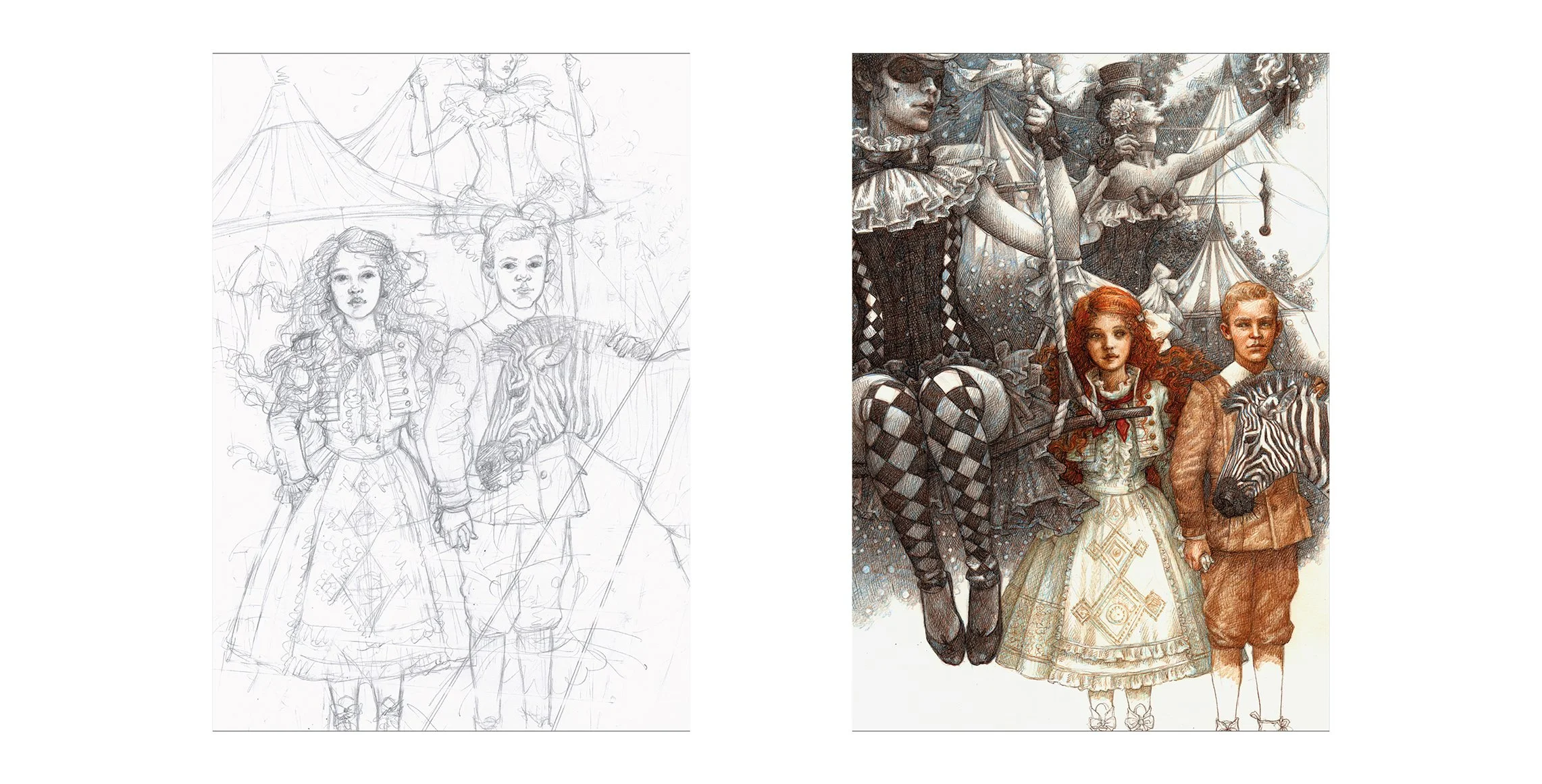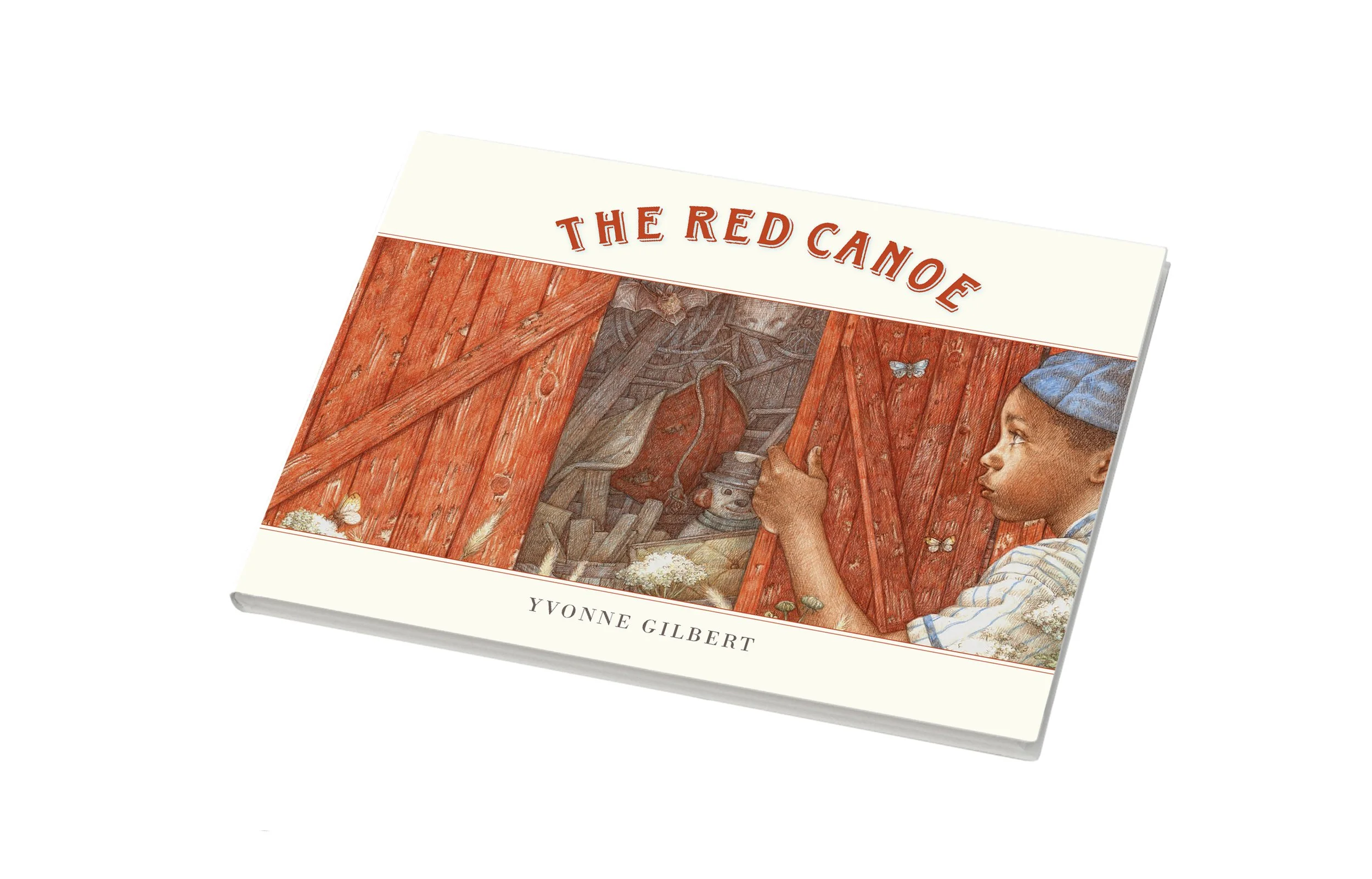Readers first meet Armando as he breaks the fourth wall by aiming his gaze at YOU, the reader, who has found him in his home. Arnold's direct yet lyrical text incorporates accurate rainforest terms and descriptions, nestled within a heart-tugging fictional tale about the power of purpose in Armando's life. By connecting so strongly with readers through text and images, they, too, will experience that purpose. Rich with sensory detail, even though written as a third person narrative, the unfolding text channels Armando's daily life so intimately that it opens readers to sensing "the leaves crunching beneath him", "mud squishing between toes", and the intimate connection he feels to this leafy refuge.
From the pre-narrative note about Armando's responsibility for a specific small tract within the rainforest, to the title page art which gently frames his home in a heart-shaped form, the mood is set to fall in love with the rainforest and root for everything Armando loves. Even before the main text begins.
Within the first few page turns we note that Armando has grown from a boy to a young man who treasures those early years of his life and the ways in which the rainforest continues to offer him peace and security. He (through the high-stakes text) perceives whirring chainsaws, rumbling trucks, flames, and other ominous signs closing in from all directions. This raises the stakes for him and for readers. Within single lines of text, various creatures "no longer..." (text describes typical behaviors), providing information about rainforest inhabitants while sustaining emotional investment and growing concern for their welfare.
In a classic "storymagician" approach, three sets of "others" make their ways to Armando to offer every conceivable option in exchange for his increasingly isolated "island" of rainforest. In each case Armando considers, respectfully, but declines. In each case, surrounding parcels that are lost to development lead creatures from those areas to take refuge within Armando's territory. The conclusion does not surprise, in terms of Armando's choices or the resulting effect on the wildlife. Instead it affirms and reassures readers. If anything manages to suspend belief it is that his rights and wishes prevailed, since that is so seldom the case when money and power are involved. This, though, merits our trust and confidence, since a single read-through will leave us with shock and chagrin that ANYONE would destroy such a treasure. I can't imagine anyone reading this book only once. EVERYONE must move through cynicism to believe, and HOPE, as Armando does, that the siren song of rainforest awareness might one day reawaken in those who have lost sight of what has real value.
Back matter provides brief paragraphs about some of the animals whose presence and behaviours appear within the narrative.
I can't resist spending some moments on the incredibly skilled and beguiling illustrations of Anne Yvonne Gilbert. The intricate details, layered lives, emotional energy, and delightful demeanors that weave themselves into each scene invite readers to experience indirectly as many elements of a rainforest habitat as those who live within it. Any single spread could be displayed as a work of art, yet the shifting perspectives, maturing Armando, distressed and desperate animals, and determined intruders contribute immensely to the page-turning power of this story. Although I often insist on not having favorites among many decades of picture book loves, I will always include Lynne Cherry's THE GREAT KAPOK TREE: A Tale of the Rainforest among my "Best of ALL Time" listings. (Clarion Books, 2000). If you haven't read it, please do, and consider "voicing" the animals who speak in the boy's dream in ways that mirror their natural sounds. Feel the urgency of those desperate KAPOK TREE residents as they beg for protection of their singular, remarkable home. It, too, is a sort of island of survival within a rainforest.
ARMANDO'S ISLAND stands strong and proud in the long wake of this classic picture book. It offers just as much allure and emotional depth while informing and inviting participation by the reader in important decisions about the preservation of the rainforest. In this case, the animals speak only through their compelling expressions and natural impulse to seek survival within a shrinking habitat. Armando is wide awake to the reality of what is being offered to him and what the consequences of his choices would mean. This new offering, like Cherry's more fanciful account, is informational fiction at its best.











































